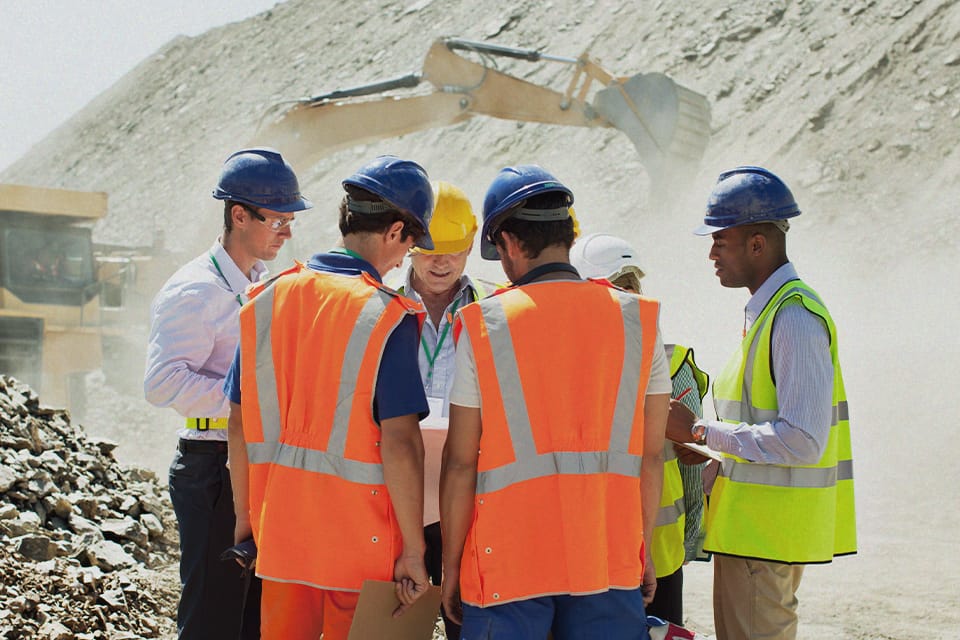
Holiday Bonus Episode: Safety Tips You Need This Season | Risk Matrix Episode 122
THE RISK MATRIX Cutting-edge podcast on occupational safety and risk management. Hosted by industry titans: JAMES JUNKIN, MS, CSP, MSP,…

In many organizations, “safety culture” is treated as a cornerstone of operations. It’s highlighted in executive meetings, training manuals, and leadership speeches. Companies proudly point to low incident rates, strong compliance, and robust policies as proof of a thriving culture of safety.
But here’s the issue: while leadership believes safety culture is strong, many workers, especially contractors, feel disconnected from it.
This disconnect is not about poor intentions. It’s about visibility. When safety culture isn’t actively measured, communicated, and reinforced, it becomes invisible. Workers may follow procedures without truly understanding or engaging in the company’s mission. Contractors may complete onboarding yet never feel like they belong. These gaps often stay hidden until a serious incident forces attention.
To close this gap, organizations must look beyond checklists and metrics. They need tools and strategies to make safety culture visible and inclusive for everyone, especially in contractor-heavy environments.
To improve safety culture, it helps to distinguish it from a closely related concept: safety climate.
Safety culture is the long-term set of values and behaviors that shape how safety is treated within a company. It reflects the organization’s deeper beliefs about risk, responsibility, and care for workers.
Safety climate, on the other hand, is how people perceive safety in the moment. It’s a snapshot of what employees and contractors believe about safety leadership, communication, and practices right now.
Think of culture as the soil and climate as the weather. Both influence how things grow, but climate gives you a more immediate view of current conditions. That’s why measuring safety climate is so useful: it helps you understand how safety culture is truly experienced.
This distinction is especially important for organizations that work with contractors. Contractors may be trained in the same systems and processes as full-time employees, but their experience often differs. They may feel excluded from decision-making, confused about who to report to, or unsure whether leadership truly prioritizes their well-being.
If safety culture doesn’t include them, it won’t work for them.
Safety Climate Surveys regularly uncover a wide perception gap between how leaders and workers view safety.
Executives and managers often rate their safety programs highly. They cite strong policies, training sessions, and low injury rates. But workers—especially those from third-party contractors—may tell a very different story. They might feel hesitant to speak up, unsure how to report problems, or skeptical that leadership will take action.
This disconnect can lead to real consequences:
When people feel ignored, they stop trying to engage. They go quiet. Over time, even the most well-documented safety program loses its strength.
Improving safety culture requires more than good intentions. It requires data—and not just from internal teams.
Statistically validated tools like the Nordic Safety Climate Questionnaire (NOSACQ-50) help organizations understand how safety is truly perceived. Developed by safety researchers, this survey captures critical factors such as:
NOSACQ-50 is widely used across industries, including environments with large contractor populations. It offers a reliable, research-based way to benchmark perceptions and track change over time.
With tools like these, organizations can:
Making safety culture visible starts with measurement. When workers see their feedback reflected in action, trust and engagement grow.
Communication is the core of any strong safety culture. But it must be two-way. Directives from leadership are important, but so is feedback from the field.
To improve communication, companies should:
Contractors should be fully included in safety discussions. If they feel like outsiders, their knowledge and concerns will stay untapped. Bringing them into the conversation is one of the clearest ways to make safety culture visible.
No one person owns safety. It’s a shared responsibility. A healthy safety culture grows through collaboration: between departments, between leadership and frontline workers, and between companies and their contractors.
Collaboration means more than inviting people to meetings. It means building processes that actively involve diverse voices in decision-making.
Some proven approaches include:
This kind of collaboration builds trust and practical improvements. It also sends a message: everyone’s perspective matters.
To support a collaborative safety culture, leaders must move away from a top-down mindset. Instead, they should promote shared responsibility across roles and job sites.
Strategies for fostering this include:
In many industries, contractors bring deep technical expertise. Tapping into their knowledge strengthens the entire safety program. Let them lead toolbox talks, mentor new hires, or contribute to investigations. Their insights can highlight risks that others miss.
Contractor onboarding shouldn’t stop at compliance. It’s your first chance to welcome external workers into your safety culture and make them feel like part of the team.
Effective onboarding should include:
When onboarding is thoughtful and inclusive, it sets the tone for how contractors view your safety culture.
Safety culture is never “done.” It needs constant feedback to grow and improve.
That means setting up clear feedback loops where both employees and contractors can:
Some methods to support this include:
The most important step? Closing the loop. If workers give feedback, they should see what changed because of it. Communicate updates clearly—through dashboards, meetings, or digital tools. When people see that their voices matter, engagement improves.
A strong safety culture isn’t something you declare. It’s something your workers feel.
When safety culture is only visible to leadership, it fails those who are most at risk. The solution isn’t more policies or more metrics. It’s more listening, more inclusion, and more action.
By measuring safety climate, opening communication, collaborating with contractors, and responding to feedback, organizations can turn an invisible safety culture into a visible, living force.
And when safety culture is visible, it becomes real. Workers know they’re valued. Contractors feel empowered. And everyone, from the boardroom to the jobsite, shares in the responsibility of bringing each other home safe.
James A. Junkin, MS, CSP, MSP, SMS, ASP, CSHO is the chief executive officer of Mariner-Gulf Consulting & Services, LLC and the chair of the Veriforce Strategic Advisory Board and the past chair of Professional Safety journal’s editorial review board. James is a member of the Advisory Board for the National Association of Safety Professionals (NASP). He is Columbia Southern University’s 2022 Safety Professional of the Year (Runner Up), a 2023 recipient of the National Association of Environmental Management’s (NAEM) 30 over 30 Award for excellence in the practice of occupational safety and health and sustainability, and the American Society of Safety Professionals (ASSP) 2024 Safety Professional of the Year for Training and Communications, and the recipient of the ASSP 2023-2024 Charles V. Culberson award. He is a much sought after master trainer, keynote speaker, podcaster of The Risk Matrix, and author of numerous articles concerning occupational safety and health.


THE RISK MATRIX Cutting-edge podcast on occupational safety and risk management. Hosted by industry titans: JAMES JUNKIN, MS, CSP, MSP,…

THE RISK MATRIX Cutting-edge podcast on occupational safety and risk management. Hosted by industry titans: JAMES JUNKIN, MS, CSP, MSP,…
We’ll send you practical and insightful supply chain risk management info that can benefit your business. Plus, important company updates that keep you in the loop.
